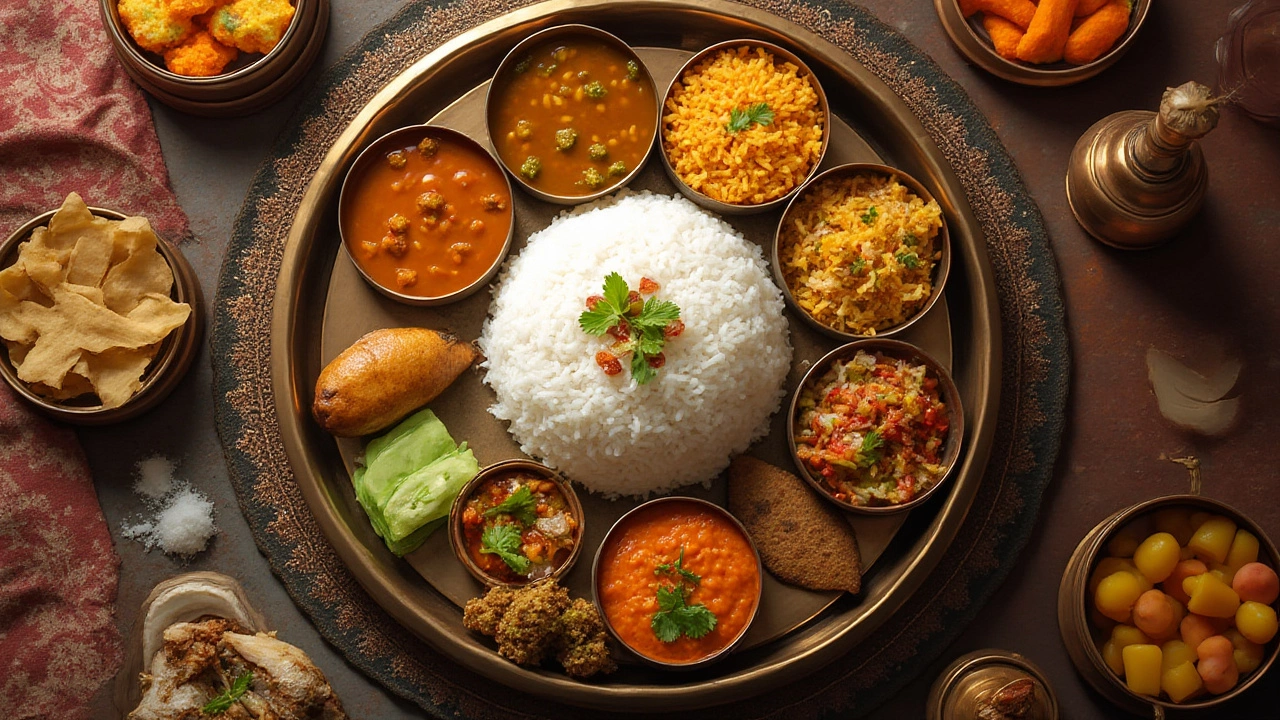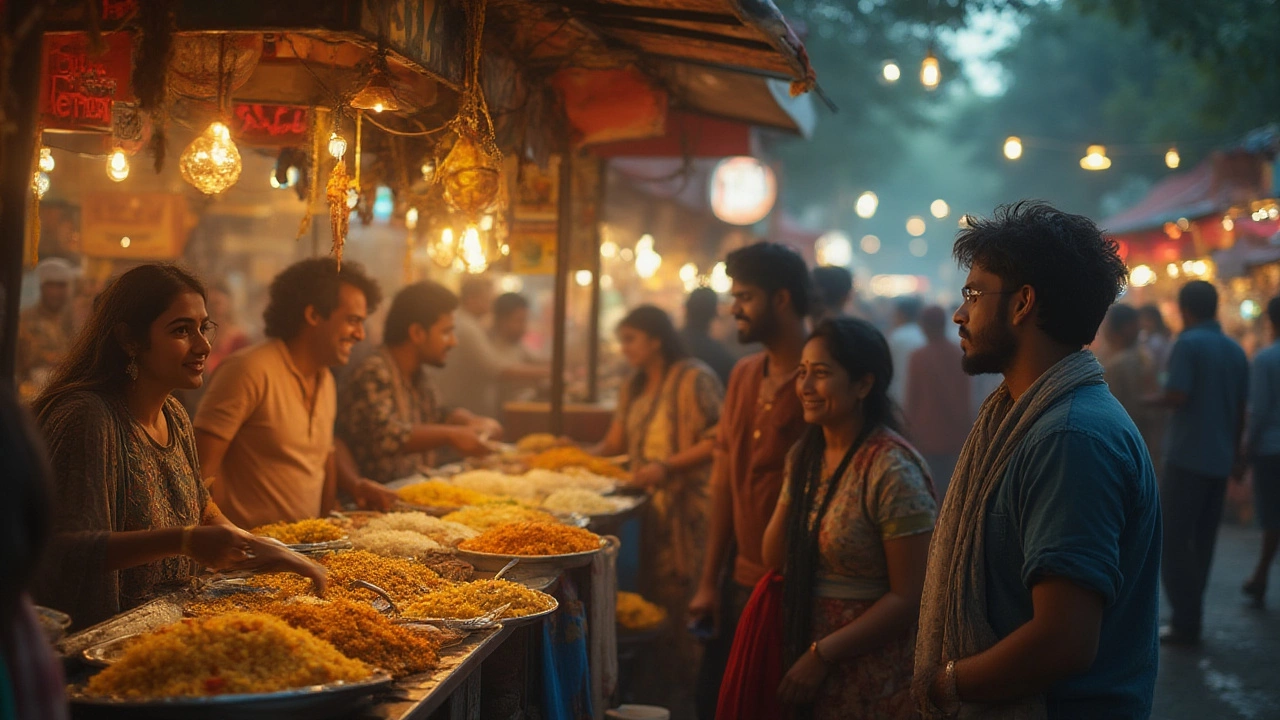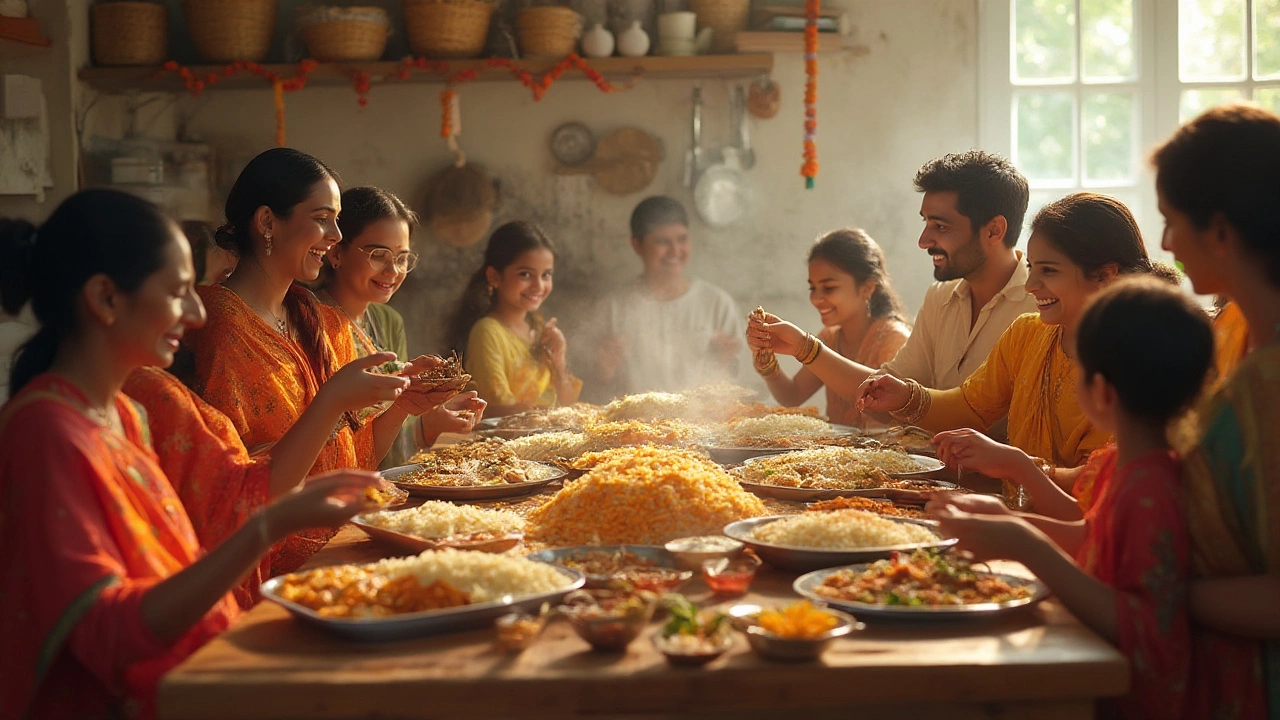Picture walking through a busy Indian neighborhood during lunch hour. Behind almost every doorway, someone is placing a mound of steaming rice on a steel plate, pouring over it a ladleful of fragrant dal. Conversations—whether in Bengali, Gujarati, Tamil, Punjabi, or Hindi—might sound different, but one thing sticks out: rice and dal show up almost everywhere. The most eaten food in India isn’t something exotic or complicated. It’s the same simple pairing you’ll find from bustling Mumbai canteens to quiet village homes in Assam: rice and dal.
Why Rice and Dal Rule India’s Tables
India’s food scene feels like an endless buffet, but at the heart of every meal is a mighty staple. It’s not butter chicken. It’s not chaat. It’s rice, usually paired with dal (lentil stew), that really feeds the country. The proof is in the numbers: India grows more rice than any country except China, and it’s the world’s largest consumer. Each year, Indians eat over 100 million metric tons of rice. By comparison, wheat—mostly eaten in the north as roti or chapati—comes in second but doesn’t come close to rice’s popularity nationally.
Dal, too, is everywhere. Lentils are cheap, filling, and easy to cook in massive batches. Yellow split moong, bold-flavored toor, creamy urad, nutty chana—these aren’t just ingredients, they’re daily rituals. You’ll find dal bubbling on stoves from railway kitchens to family apartments. Sure, curries and breads appear often, but nothing matches rice and dal for sheer reach and regularity. When in doubt, Indians make rice and dal. Even in households that favor wheat rotis, dal is the ever-present protein alongside vegetables and bread.
Here’s something wild: There isn’t one standard dal recipe. The classic yellow dal tadka of Mumbai is different from the thick, garlicky dal fry in Punjab or the downright soupy sambar in Tamil Nadu. Yet, at their core, these are all lentil-based comfort foods—humble, nourishing, and essential. The basic rice-and-dal combo provides carbs and protein, together fueling millions through work, school, and play. In my own home, even my skeptical cat Whiskers recognizes the earthy scent of dal as dinner hour rolls in.
Why are rice and dal so entrenched? For starters, they’re cheap, quick to cook, and endlessly adaptable. You can jazz up dal with onions or tomatoes, throw in spices, or leave it plain and soothing for a sick day. Kids, grandparents, and even picky eaters will nibble on them without a fuss. Plus, eating rice with dal makes for a complete protein, which is especially handy in a country where many families can’t afford much meat.
Food historians point to rice and dal’s lasting appeal: Ancient texts and temple carvings from 5th-century India and earlier reference meals centered on grains and pulses. Their popularity grew with trade, harvests, and migration. Today, whether you’re in Kerala with a bowl of parboiled rice and sambar, or in Odisha with dalma, the duo remains unbeatable. Yes, feasts feature more elaborate dishes, but on regular days, when you peek through kitchen windows, it’s typically rice and dal doing the heavy lifting.
| Food Item | Annual Consumption in India (million metric tons) | Main Regions |
|---|---|---|
| Rice | 100+ | Pan-India, especially South & East |
| Wheat | 96 | North & Central India |
| Lentils (All Types) | 25 | Pan-India |
| Vegetables | 190 (total) | Pan-India |

Regional Twists and Surprising Stories
You’d think a staple this simple would be boring. But the richer story is in its endless variety. Take the South. Step into a roadside eatery in Chennai and you’ll see fluffy white rice topped with hot sambar and dollops of spicy chutney on the side. In West Bengal, the lunchtime clatter always involves bhaat (rice) and tok dal (a tangy yellow lentil), sometimes with a wedge of fried fish for special days. Walk a little west to Gujarat, and you’ll find khichdi—rice and moong dal simmered together—served with pickles and yogurt. Even in places that love their wheat, like Punjab or Delhi, rice and dal are common during festivals or when something simple is needed.
What’s fun is how these dishes swap spices, oils, and add-ons. Karnataka’s bisi bele bath is a slightly spicy rice-lentil stew with tamarind and veggies. Andhra-style pappu is thicker, with a kick of chili, and often brightened with tangy tomatoes. Odisha’s dalma features heaps of veggies cooked with toor dal and a hint of ginger. In the North, dal chawal (dal and rice) can be mellow or bold, but never dull—sometimes with a squeeze of lemon, onion salad, or a little ghee for flavor and comfort.
All this variety isn’t just culinary—it’s emotional. These combinations change shape across regions and seasons, but they anchor everyday life. I’ve seen reunion dinners where friends argue over whose mom makes the fluffiest rice to go with their signature dal. Holidays like Pongal in Tamil Nadu celebrate the harvest with pongal, a creamy pudding-like dish of rice and moong dal. Even fasting days have their own rice-and-dal substitutes, like the nutty sabudana khichdi in Maharashtra or barnyard millet pongal in Andhra Pradesh.
There’s also something about rice and dal that encourages sharing. Guests drop by? There’s always a pot of rice steaming and dal bubbling on the stove. Kids back from school? It’s the first thing their moms offer. Even street-side tiffin services deliver this combo by the millions to office workers in cities every day. During lockdowns, rice and dal were the lifeline for many families, delivered as essential rations by NGOs and local communities.
Many Indian states track rice and dal consumption because it’s crucial for food security. Statistically, about 65% of rural Indians and 30% of urban Indians eat rice daily, sometimes even more during “lean” months when pricier foods are out of reach. The government’s midday meal program, which feeds millions of children every school day, relies heavily on rice and dal. State-run canteens like Tamil Nadu’s Amma Canteens keep people fed with massive vats of these staples for just a few rupees. That kind of reach is hard for any other dish to match.

Tips, Tricks, and Tasty Upgrades
If you’ve always eaten your rice and dal the same old way, you’re missing out on some fun. There are hundreds of ways to upgrade this everyday staple. Add a dollop of homemade ghee (clarified butter) on top—the nutty smell alone is enough to get the neighbors’ attention. Or fry up some garlic and cumin seeds in a spoonful of oil for a crunchy, fragrant tadka (tempering) to pour over your dal just before serving. Some add a handful of wilted spinach, chopped tomatoes, or a squeeze of lemon to brighten things up. Leftover rice? Toss it in a pan with a minced green chili and an egg for a next-morning breakfast scramble. Mix dal into your pancake batter or turn khichdi into crispy patties for lunchboxes.
Worried about nutrition? Dal is packed with plant protein, fiber, iron, and B vitamins. Pairing it with rice gives your body all the amino acids found in meat—without the price tag. For extra vitamins, add in fresh vegetables when you cook, or serve with a small salad and some yogurt as a cooling side. Trying to cut carbs? Use brown rice, red rice, or experiment with quinoa or millet, common in southern and central parts of India. Even on special occasions, jazzed-up versions like lemon rice, dal makhani (slow-cooked buttery black lentils), or Bengali masoor dal with a hint of mustard oil make guests sit up and pay attention.
If your only experience with Indian food is at restaurants, know this: the rise of “comfort food” menus worldwide means classic dal and rice combos are popping up everywhere from food trucks to gourmet buffets. Chefs throw in their own twists—truffle oil, roasted peanuts, even tofu-based dals for vegans—but the soul of the dish stays the same. Street food may get the adrenaline, but rice and dal do the heavy lifting daily in Indian kitchens.
Need weeknight dinner inspiration? Stock up on a couple of lentil varieties: yellow moong for light, quick dals, toor dal for a earthy stew, and maybe masoor for the days you want something fast and filling. Buy a bag of Indian short-grain rice and a jar of turmeric, and you’ll always be ready to whip up something nourishing and deeply satisfying. Keep cumin, coriander, garlic, fresh green chilies, and ghee handy—you’ll thank me later, and maybe even Whiskers will approve.
Rice and dal may not look glamorous, and they probably won’t win Instagram popularity contests. But when you want the answer to what’s eaten more than anything else in India, stop looking for the dramatic or the expensive. The answer is plain, simple, soft, and golden. Grab a bowl, spoon in some steaming rice, pour over your favorite dal, and now you’re eating like most of India—day in, day out. That’s the real taste of the nation.
